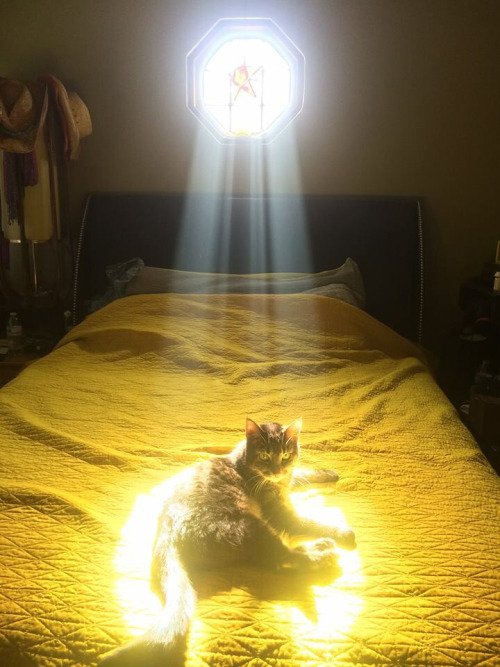It’s Not Technically Science But I’m Pretty Proud Of Our Creation. Behold, The Periodic Table Of


It’s not technically science but I’m pretty proud of our creation. Behold, the Periodic Table of Cookies! (Bell peppers for obscuring identifying info.)
More Posts from Secretagentpeptidebond and Others

The Wolf Among Us

Despite its appearance, there is order in the chaos of turbulence. These snapshots from a turbulent channel flow simulation outline these coherent structures in black. The top photo shows a top view looking down on the channel and the bottom image shows a side view of the channel. It is thought that studying these coherent structures may help shed light on turbulence and its formation, which remains one of the great open questions of classical physics. (Photo credit: M. Green)
We were just discussing in class today in the context of ubiquinated H2B. Neat!

Ubiquitin is a regulatory protein found in most tissues of many walled-celled organisms. Originally known as ubiquitous immunopoietic polypeptide, ubiquitin was discovered in 1975 and its mechanism identified by a team including Aaron Ciechanover, Avram Hershko, and Irwin Rose of the Fox Chase Cancer Center, for which they were awarded the Nobel Prize in Medicine in 2004. Ubiquitins act as traffic control agents within the cell, directing other proteins to various compartments within the cell including tagging proteins for destruction.
The word ubiquitin was formed in 1975 from the English adjective ubiquitous which dates only from 1837. Ubiquitous derives from the noun ubiquitary which dates from 1580s from the Latin preposition ubi meaning where and que meaning any, also, ever. Ubiquitary (meaning everywhere) originally referred to the Luthern doctrine that Christ is omnipresent.
Representation of ubiquitin protein, highlighting the secondary structure. α-helices are coloured in blue and β-strands in green. The sidechains of the 7 lysine residues are indicated by orange sticks. The two best-characterised attachment points for further ubiquitin molecules in polyubiquitin chain formation (lysines 48 & 63) are labelled.
Image of ubiquitin protein courtesy rogerdodd under a Creative Commons 3.0 license, used with permission.



Vacuum distillation of polyaromatic compounds could be fun.
In this case I only had to sit with an UV lamp to see when will my compound distill, since it had a bright blue fluorescence (as seen), while the side products of the reaction did not had any visible emission when irradiated with UV light.

MIT discovers a new state of matter, a new kind of magnetism
“Really, though, the most exciting thing about quantum spin liquids is that they’re completely new, and thus we ultimately have no idea how they might eventually affect our world. “We have to get a more comprehensive understanding of the big picture,” Lee says. “There is no theory that describes everything that we’re seeing.””








